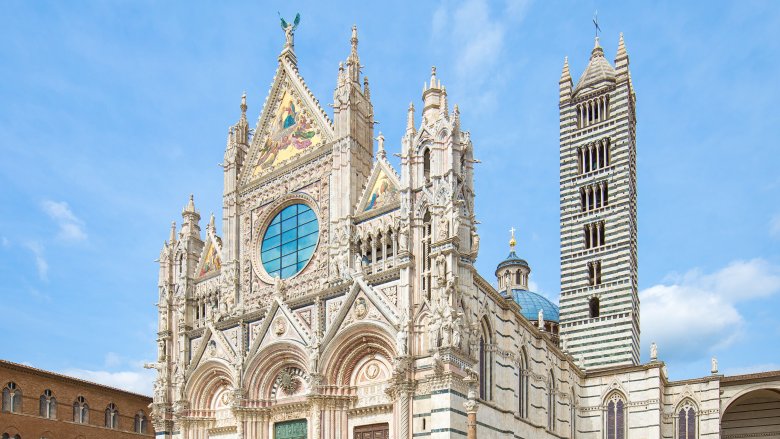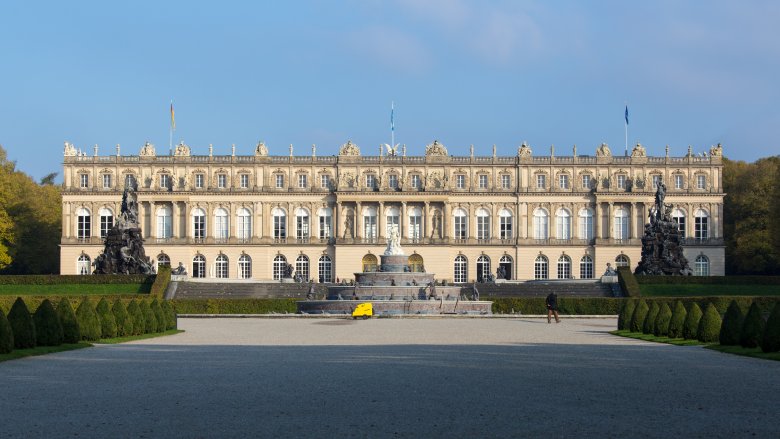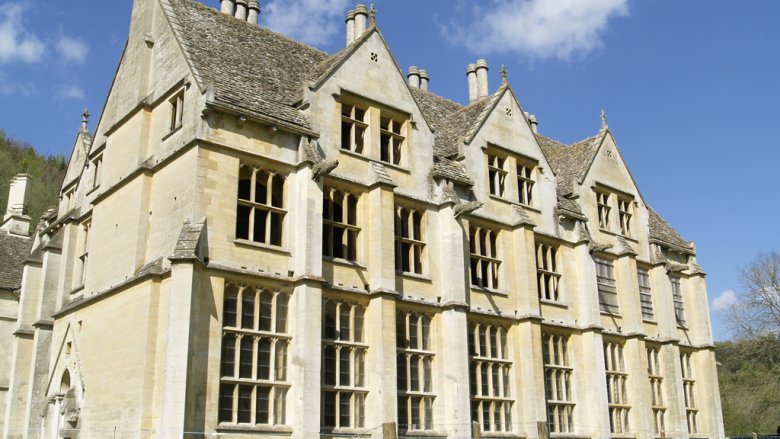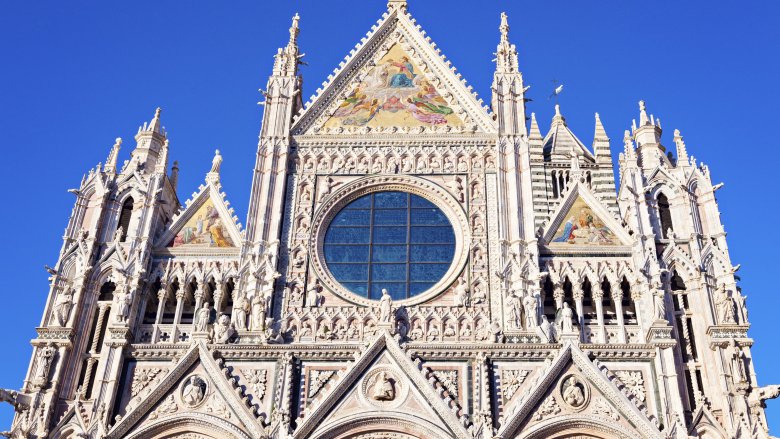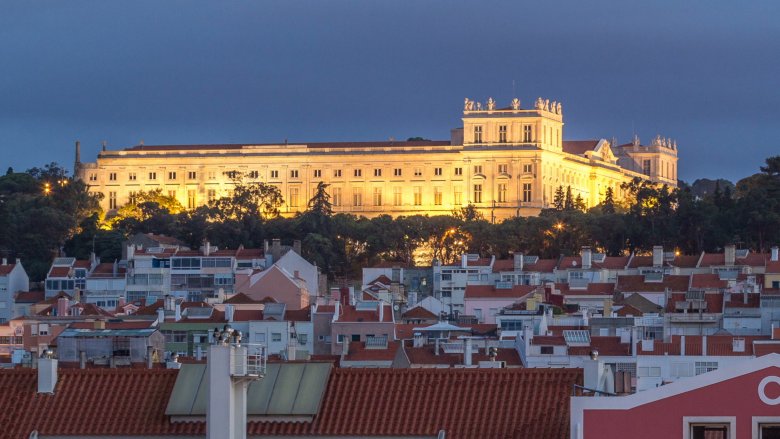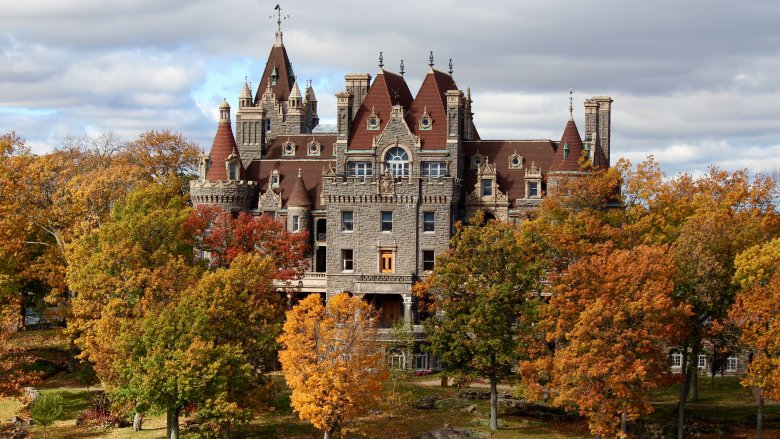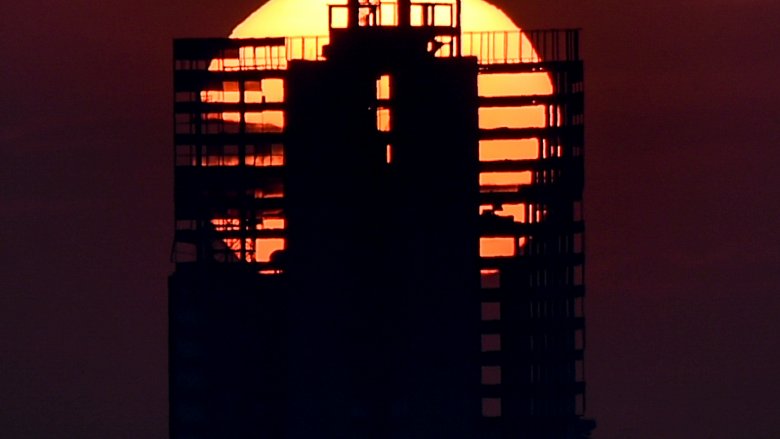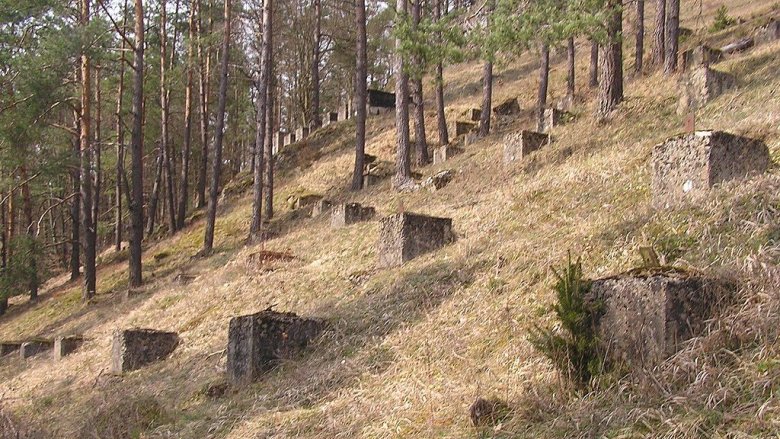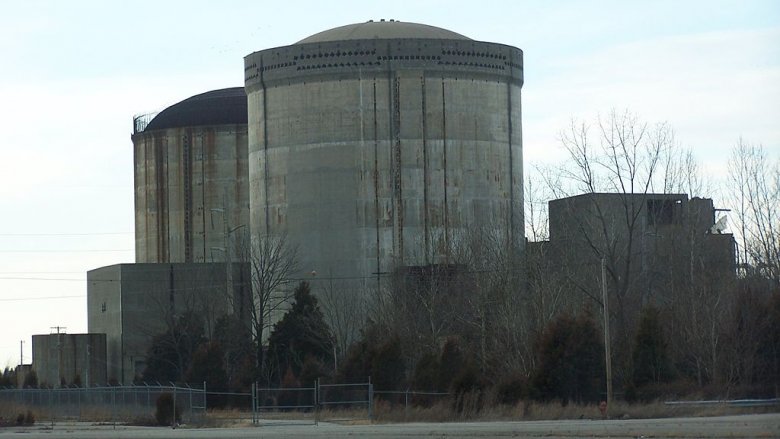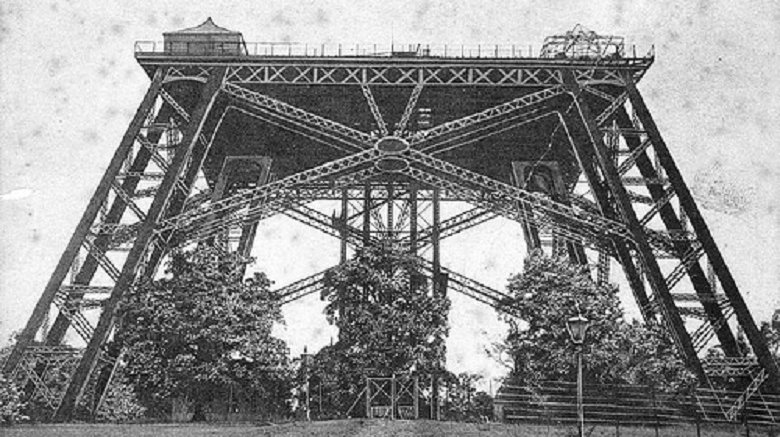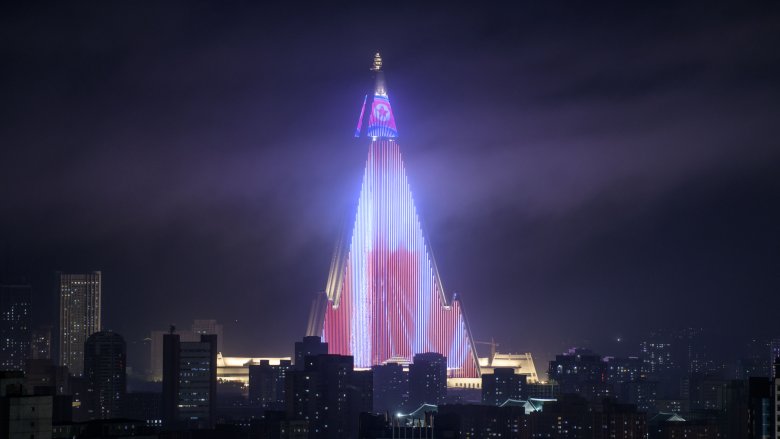Extravagant Buildings That Were Never Finished
Even when humans lived in caves, they wanted a bigger, fancier cave than the family next door. Then we learned how to build structures, and all bets were off. Over the centuries, some amazingly talented people have come up with some ridiculously extravagant buildings. They've used them as displays of power, as tributes to God, as gorgeous but inconvenient places to live, and as ways to make a ton of money.
But sometimes, things don't work out the way people plan. You can draw and design an extravagant building, but once you start construction, everything can go wrong. Costs can skyrocket, money can dry up, and vital people can die. That's when you end up with really expensive, basically useless structures. Some are eventually knocked down after years of neglect, others stand forever in their unfinished state and become tourist attractions. Here are some of the most elaborate buildings ever left unfinished.
Herrenchiemsee Neues Schloss was going to be the fanciest building ever
One problem with hereditary monarchy is that sometimes, you get a crazy person on the throne. In 1800s Bavaria, they had a doozy. King Ludwig II was mentally unwell and pathologically obsessed with building castles. It didn't matter if he was bankrupting the country to pay for them, he had to keep building.
He had quite a few extremely grand creations under his belt already when he became enamored with the famous French Palace of Versailles. According to Atlas Obscura, instead of just visiting it like a normal person, Ludwig decided to build his own. His goal was to copy the original in extreme detail (the Bavarian Palace Department says he ordered his architect to recreate rooms Versailles didn't even have anymore) and at the same time be even more over-the-top.
Ludwig's Neues Schloss (or "New Palace") was built to have no practical function whatsoever. It was just meant to beat you over the head with how pretty and fancy it was. The rooms that were finished are "some of the best examples of nineteenth-century interior design in existence."
Ludwig's original vision was for a 70-room building shaped like a W. After seven years of construction, only 20 rooms were completed, and it had already cost a quarter of a billion dollars in today's U.S. currency. Then, Ludwig died suddenly. With the castle-obsessed ruler gone, sanity prevailed, and building stopped. Some unfinished areas were demolished, but it's totally worth checking out the remaining palace if you are ever in Germany.
Woodchester Mansion was never perfect enough
It was probably William Leigh's devout Catholicism that kept his house unfinished. According to Abandoned Spaces, the recent convert and successful businessman bought a bunch of land in Gloucestershire, England, hoping to start a Catholic community in a very Protestant country. He managed to complete a church and monastery no problem, but having a place to live was apparently less pressing.
The official Woodchester Mansion site says that by the time he started building his home sometime in the 1850s, Leigh didn't have that much cash left. This meant building could only be done little by little. It didn't help that he would keep telling the people working on the construction to go do other things on the estate, so there was never anyone around to actually finish the house. And Leigh was a complete perfectionist, meaning everything went slowly even when building was happening. He supervised every part of construction, and his opinion was final. He often wanted changes made and demanded the highest quality on everything from the windows to the roof.
Leigh started to get ill, but he kept pushing on, having new plans produced as late as 1871. But in January 1873 he died, with only the exterior of his massive house finished. Leigh's son was left to figure out what to do with the place. Everyone he consulted said it would be so much cheaper to just build a whole new house rather than finish his father's elaborate plans. Woodchester remains unfinished.
Siena Cathedral couldn't beat the plague
The medieval people of Siena, Italy, had reason to be proud of themselves. According to Wonder Mondo, the place had a ton of money thanks to its banking center and was famous for being home to some of the best artists of the time. So, the people decided that to show everyone how great they were, they'd build the biggest cathedral in the world. And they didn't want theirs to be just a little bit larger — they wanted to absolutely dwarf everyone else.
Building something on that scale was obviously a lot slower in those days, so this was going to take centuries. They picked the highest point in the city as their location and started planning in 1196. In 1226, they started transporting construction material up the hill, and finally in 1229, building commenced.
The cathedral was constructed in stages. Slowly, very slowly, various areas of the church were completed. Planetware says that by 1317, Siena had a very nice house of worship. But it wasn't enough. 20 years later, plans were drawn up for an absolutely massive addition. Building started, but they ran into two problems. One, it turned out that the plans didn't take into account the fact the old foundations of the cathedral absolutely could not hold that much weight. And more concerning to everyone involved, Europe was suddenly hit with the Black Death and they all started dying. Later generations didn't continue with the plans, and these days one unfinished section is used as a parking lot.
The Ajuda Royal Palace had no royals to fill it
In 1755, Lisbon was rocked by a massive earthquake. According to the National Palace of Ajuda official site, one of the buildings that was lost was the Portuguese royal family's Ribeira Palace. Obviously, they needed a new place to live. At first, their fresh abode was built out of wood, a material that's resistant to earthquakes but is notoriously not fireproof, and the palace burned down in 1794. So, back to stone it was.
Construction on Ajuda Royal Palace was slow from the beginning. The building started in 1796 was going to be in the Baroque style, but fashions quickly changed, and by 1802 new architects were told to make everything neoclassical. Then Napoleon showed up, and the royal family fled to Brazil in 1807. Then there were financial issues. When the royals finally returned in 1821, only small areas of the palace were inhabitable. In 1833, political turmoil meant building stopped for decades. It wasn't until 1861 that things finally got going again.
But tastes had changed over the decades, and major changes had to made to the rooms to make them more intimate and domestic. Royals finally started to live in the palace and it was used for major functions. But in 1889, the court split up to different residences, and finishing the building became less of a priority. It still wasn't finished in 1910, when the Republic was founded, the royal family went into exile, and there was no more need for a palace. These days, the unfinished building is a museum.
Boldt Castle should have been the sweetest present ever
George C. Boldt had a classic story of the American Dream. Coming from a poor family, he immigrated to the U.S. in the 1860s from Prussia, according to 1000 Islands. By 1900, he was the owner of one of the most famous hotels in the country, and had basically all the money. He'd done well.
But where he really thought he'd nailed it was his marriage. Madly in love with his wife, he decided he'd build her a literal castle. He selected Heart Island, New York, as the location and planned on surprising her with it on Valentine's Day. Best husband ever.
The project was colossal. The official Boldt Castle site says that 300 workers were employed to build the six-story, 120-room main house, based on the German castles Boldt remembered from his youth. The whole complex would be 11 buildings. There were tunnels, ornate fountains, and statues imported from Italy. "Not a single detail or expense was spared."
Four years after construction started, the building still wasn't finished and Boldt had plowed $2.5 million in old-timey money into it. But it was all going to be worth it when he presented it to his love. Or it would have been, had she not very rudely died suddenly.
Boldt was heartbroken. He telegraphed that all building on the castle should stop immediately. He didn't want the place if his wife wasn't there to enjoy it with him, and he never returned to the island. In the years since, the castle has been restored, but never completed.
The Tower of David proves banking isn't a science
In the 1980s, Venezuela was in the middle of a banking boom, according to The Daily Beast. The Centro Financiero Confinanzas complex in downtown Caracas was supposed to become a financial center that would put Wall Street to shame. One of the buildings, the Torre David, was planned as a massive skyscraper that would be one of the tallest buildings in the country.
It was only partially finished in the mid-'90s when disaster struck. First, the lead investor in the project died unexpectedly. Then, Venezuela's banking system collapsed. By 1994, construction on the tower had stopped.
But it was already huge by that point. Even at only around two-thirds complete, the Tower of David is to this day the third tallest building in Venezuela. That meant its skeletal remains were a very obvious embarrassment to the government. They tried to auction the building off in 2001, but didn't attract any bidders.
All that empty real estate was finally put to use starting in 2007, when about 200 families invaded the tower and claimed it as their home. Soon more squatters arrived, filling the place. It became famous as the "World's Tallest Slum." A community was born, with shops, bootleg electricity, and even a surprisingly official homeowners association. The government turned a blind eye for a while, but by 2015 everyone had been evicted and the tower stood empty again.
In August 2018, some of the top floors collapsed during an earthquake, but still nothing has been done with the building.
The Aspotogan Sea Spa was never going to work
According to Global News, in the early 1990s, a German doctor came to a remote village in Nova Scotia and pitched a massive project to the council. He wanted to build a 131-room luxury hotel high on a coastal cliff. It was meant to "join a very short list of North American facilities that can claim the amenities of a world-class resort." Every room was going to "boast sweeping views of the Atlantic Ocean."
The idea didn't make much sense to locals, especially since those great views were going to be obscured by fog a lot of the year. One guy who was on the council at the time admits they thought the doctor's proposal was "crazy." But they approved it anyway and construction started.
Once the exterior of the five-story building was finished and the roof put on, the doctor threw a huge party for investors. There was "fine food, live music, and no expense spared." That was the first and last hurrah for the hotel, because within months financing dried up and the interior was never finished.
For 20 years, the shell of the resort sat there decaying. Most people forgot about it. Then, it became internet famous. The Huffington Post included the hotel on a list about creepy abandoned places. Red Bull filmed skateboarders riding through the "relic of a forgotten dream" and the video went viral.
Eventually, someone bought the land and demolished the building, so you'll have to find somewhere else creepy to pop ollies.
Deutsches Stadion was one of Hitler's less evil projects
Hitler was thinking very long-term when he came to power. The Third Reich was supposed to last a thousand years, so it makes sense that he made plans for some major construction projects. One of those was a massive sports stadium. According to Spiegel Online, on Sept. 9, 1937, Hitler laid the cornerstone at Nuremberg for the "world's biggest stadium."
It was going to be stupidly huge. The goal was to fit 400,000 people in it. As a comparison, the largest capacity for a stadium standing today is 150,000. The largest stadium ever, the Circus Maximus in ancient Rome, was alleged to have held 250,000. In short, this was an insane plan. But then, Hitler isn't exactly remembered for his rational ideas.
Construction didn't actually start at Nuremberg. Instead, "test bleachers" were built about 25 miles away. These were five levels high and seated 40,000 people, or 1/10 the size of the final structure. It was still a massive project and seemed "radically out of place" on the rural hillside. It took 400 workers 18 months to build, and when it was finished, all the high-ranking Nazis came for a major photo-op.
Hitler was thrilled with the test bleachers and had grandiose plans for the real building. It would still be "standing centuries from now" and the Olympics would be held "for all eternity" in Germany, at this stadium. Then the war started, and the stadium was never begun. The remains of the huge test bleachers were named a historical monument in 2002.
The Marble Hill Nuclear Power Plant was a dangerous money pit
The Marble Hill Nuclear Power Plant is definitely not the most visually extravagant building on this list. Nuclear reactors are basically just grey and boring and hardly ever have ceiling frescoes. But when it comes to money spent, it was extravagant to the max.
There was a time when the U.S. was crazy about nuclear power, and plants were going up all over the place. According to Orange Bean Indiana, Marble Hill was part of that craze. It was started in 1977 and was going to be the state's first nuclear power plant. Then in 1979, a reactor at Three Mile Island in Pennsylvania had an accident. It wasn't a catastrophic meltdown like Chernobyl (which wouldn't occur until 1986), but it was enough to scare people.
A New York Times article from 1984 stated that 100 nuclear power plant construction projects in the U.S. were canceled after the Three Mile Island incident. But Indiana plowed on with Marble Hill for five more years, until they finally had to throw in the towel. The project had already cost an unbelievable $2.5 billion dollars in 1984 money, making it the most expensive nuclear project ever abandoned. It was estimated it would cost $7 billion to finish, and they didn't have the money. It also didn't help that whistle blowers came forward saying corners were being cut in construction, leading to serious concerns. Over the years the site has slowly been demolished, and very little of this multi-billion-dollar project remains today.
Watkin's Tower was a modern Tower of Babel
In 1889, the Eiffel Tower opened in Paris, becoming the tallest man-made structure in the world. One proud Englishman's response: "Oh, hell no." We're paraphrasing, but according to the Guardian, Sir Edward Watkin immediately announced he was going to build a much bigger tower. Take that, Frenchies!
Watkin made no secret that he was just straight-up copying the French. He even invited Gustav Eiffel to design this tower, too, but the offer was rejected. So he started a completion, and the winning design looked just like the Eiffel Tower, but taller. 150 feet taller, with four levels instead of three. Atlas Obscura says it would have taken up three times as many visitors at a time as its French counterpart. Once up there, they would have enjoyed "restaurants, shops, promenades, Turkish baths, a theatre, a meteorological office, a sanatorium, a science lab and, on top, an observatory." The French were not going to know what hit them.
Watkin decided to build the tower at Wembley in London, because he made his millions from the railway and had a new track running past there. He thought his massive tower would attract lots of visitors who would need to take his train. Building started in 1892 and the first level of the tower was completed soon after. Then, the problems started. Construction costs increased. The money ran out. The first level embarrassingly sat there for years, earning nicknames like "The London Stump" and "Watkin's Folly." Finally, it was demolished in 1907. The French won.
The Ryugyong Hotel is a giant symbol of failure
North Korea has a huge, useless unfinished building, all because of their competition with their neighbors. According to All That's Interesting, in 1987, Singapore opened what was then the tallest hotel in the world. And Seoul, South Korea, was about to host the Olympics. North Korea's Kim Il-sung wanted to do something impressive, too, so he started a grand construction project. It was internationally publicized that when finished it would be "the tallest building in the world, the largest hotel ever built, and the grandest piece of architecture that the world had ever seen." More than 30 years later, the world is still waiting.
Originally, the Ryugyong Hotel was built with backing from the Soviet Union, so construction of the shell of the building was on schedule. It is seriously creepy looking, earning it the nickname the "Hotel of Doom." It's also built to look exactly like the Ministry of Truth from 1984, so make of that what you will.
Then the U.S.S.R. collapsed, and construction stopped. The structure that was supposed to show the world how great North Korea was became a looming reminder they were broke and incapable of finishing a building. Finally, in 2008 an Egyptian company agreed to complete the hotel and a grand opening was announced for 2012. That was pushed back to 2013, then canceled altogether. While there were signs of work again in 2017, as of December 2018, the hotel remained unfinished and is now used as a backdrop on which to project political propaganda at night.
